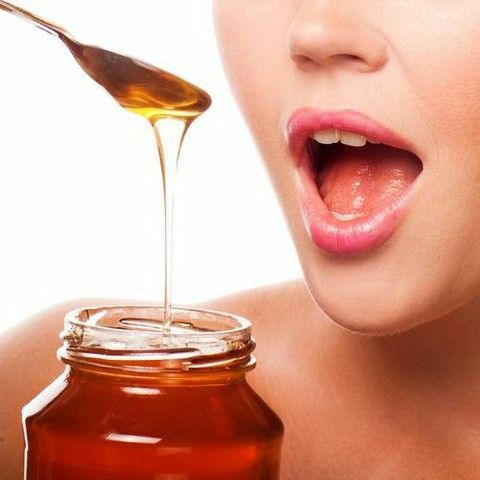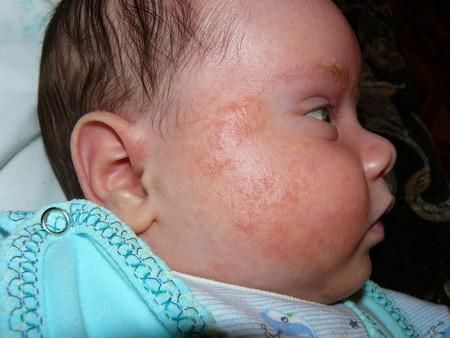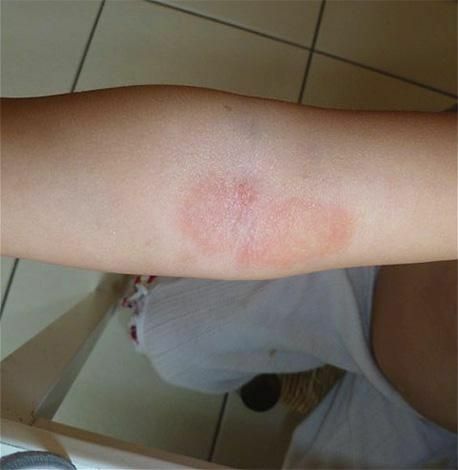 Allergy to honey, in fact, is an allergy to pollen, which is inevitably part of this beekeeping product. Therefore, with the immunity of one type of honey, for example, lime, there is a high probability of normal tolerability of other species.
Allergy to honey, in fact, is an allergy to pollen, which is inevitably part of this beekeeping product. Therefore, with the immunity of one type of honey, for example, lime, there is a high probability of normal tolerability of other species.
Thus, people suffering from pollinosis, as well as asthmatics are more susceptible to the development of allergic reactions to beekeeping products. Nevertheless, the rest can face such a problem if:
- during the processing of honey, a significant amount of pollen got into it;
- honey has been infiltrated by various chemicals used for processing hives and treating bees;
- the owners of apiaries are careless about sanitation rules;
- consumes an excessive amount of the main product of beekeeping.
Important: in a day an adult can eat no more than 100-150 g of honey.
Symptoms of
In most cases, the symptoms of honey allergy do not keep you waiting long. They can manifest as local impairments from the respiratory system, gastrointestinal tract, skin and mucous membrane problems, and general deterioration of well-being, in particular:
- by the appearance of blisters, rashes, redness or swelling of the skin and mucous membranes in different parts of the body, lacrimation;
- diarrhea, vomiting, abdominal pain, vomiting;
- in the throat, shortness of breath, discomfort in the lungs, wheezing, severe coughing or sneezing, runny nose and even bronchospasm;
- with severe headaches, fever, fatigue, ejaculation or hearing impairment, etc.
In certain cases, the way an allergy to honey is manifested can be dangerous for a person's life, since anaphylactic shock can develop. Disturbing symptoms are:
- sharp drop in blood pressure;
- excessive sweating;
- severe redness or, conversely, pale skin;
- appearance of absent-mindedness or unreasonable sense of anxiety;
- strong thirst;
- breathing problems until it stops.
Warning! If there are signs of a severe allergic reaction, you should not take a minute to seek medical help and take an antihistamine, as there is a real threat of death.

The most common signs of honey intolerance are observed in preschool and infants if the mother is abusing this product. Usually, over time, their digestive and immune systems mature, and children begin to react normally to the use of bee products. But sometimes it happens the other way round: already an adult people, who have always tolerated honey, after the next use of this product in food develops an allergic reaction.
Important: Contrary to popular belief, allergy to honey is rare enough - only 1 person out of 100 can suffer from it.
How to check for allergy to honey?
In order not to risk your own health and appearance better, before you eat honey or a dish in which it is included, check how well the body tolerates this product. For this it is enough to either slowly dissolve 1 drop of honey, or apply it to the inner crook of the elbow. In the first case, if there is an allergy, such unpleasant sensations in the mouth as perspiration, swelling of the tongue, lips or pharyngeal mucosa will appear, etc. In the second, in just a few minutes, the skin will become red, blisters and itching. Here is an example of a photo of an allergy to honey.

Attention! If the test shows the presence of an allergy, immediately rinse the mouth thoroughly or remove the product from the skin, so as not to cause deterioration.
What should I do?
Combating manifestations of allergy to honey is carried out by the same means as in all other cases. Similarly, in order to eliminate skin rashes and respiratory disorders, patients are prescribed:
- antihistamines;
- preparations, normalizing the work of the digestive tract;
- hormonal products for external use, sprays, etc.;
- enterosorbents, etc.
It is important: every drug has a number of contraindications, therefore, before you start taking any medication, you should definitely consult a doctor, especially if you have an allergy to honey in your child.
If the allergic reaction proceeds violently and causes the development of serious disorders, for example, swelling of the pharynx and difficulty breathing, immediately, without hesitation, call an ambulance. But, regardless of the severity of the symptoms, honey falls into the category of banned foods. Therefore, it can not only be consumed inside in its pure form or in the composition of various dishes and drinks, but also used as a component of home cosmetics. Also, of course, will have to abandon the ready-made cosmetics, which include honey.

Folk remedies
The folk methods are able to get rid of the external manifestations of allergy:
- Prepare a mixture of equal amounts of kefir, water and sour cream. The obtained lotion wipe the skin of the affected areas several times a day.
- In a glass of water, dissolve ½ tsp.boric acid and the resulting solution is impregnated with a clean bandage, folded into several layers. The finished compress is applied to the affected areas.
- Chopped dried camomile flowers, sage leaves and herbaceous grass. In a glass of boiling water brewed 2 tbsp.l.of the resulting mixture and leave to be infused. After 2 hours the preparation is ready for making compresses. They should be changed several times every 20 minutes.
